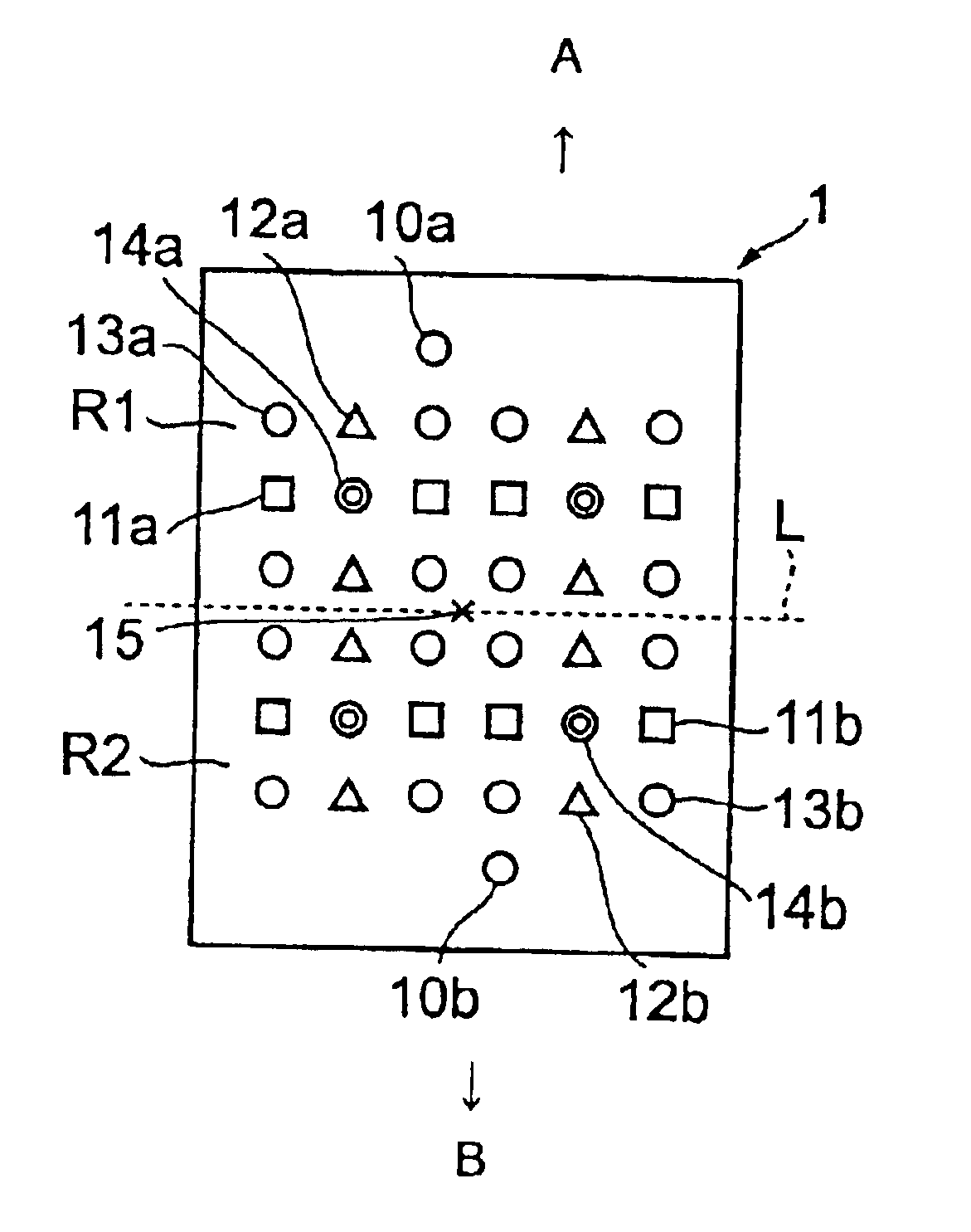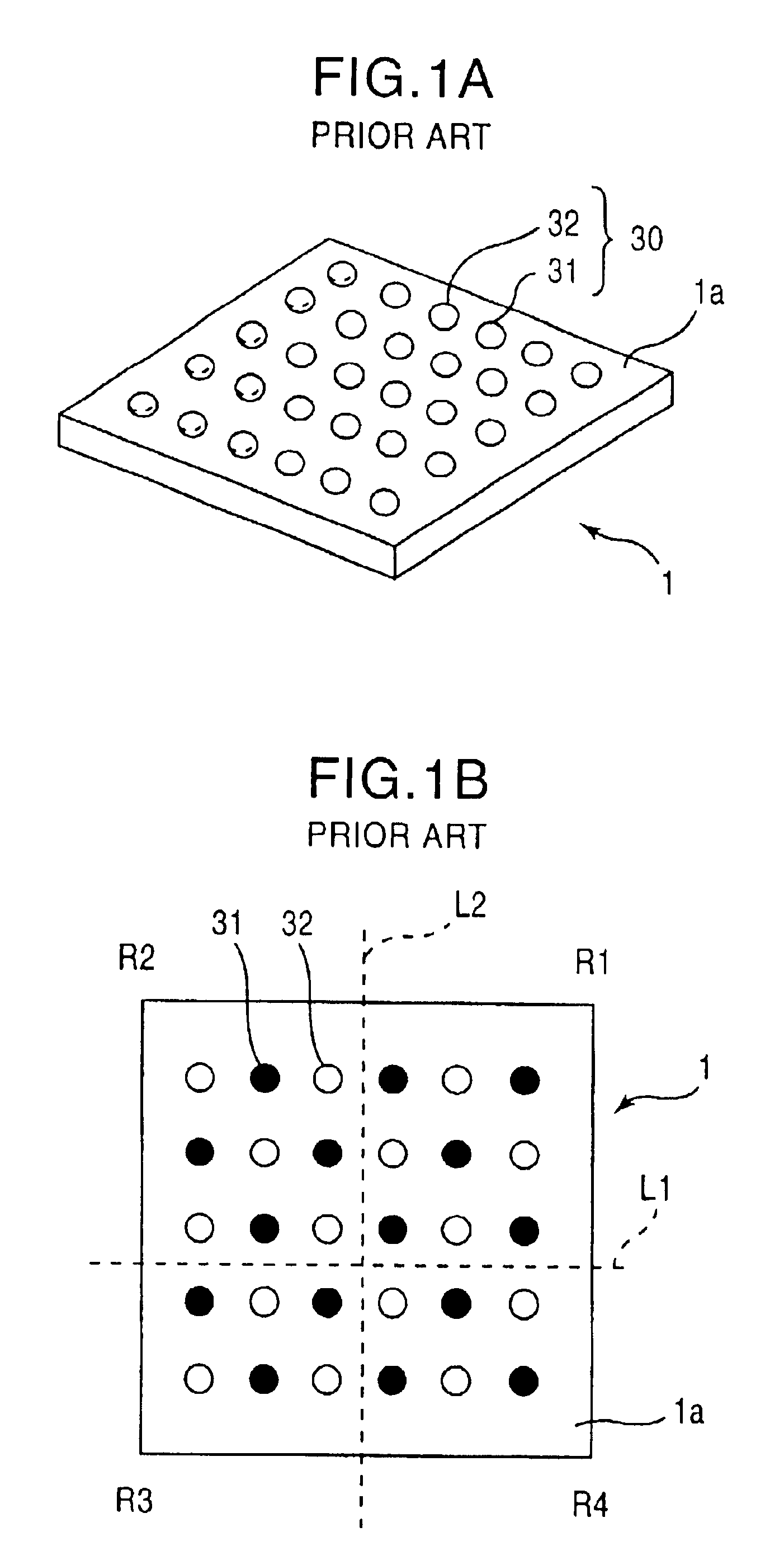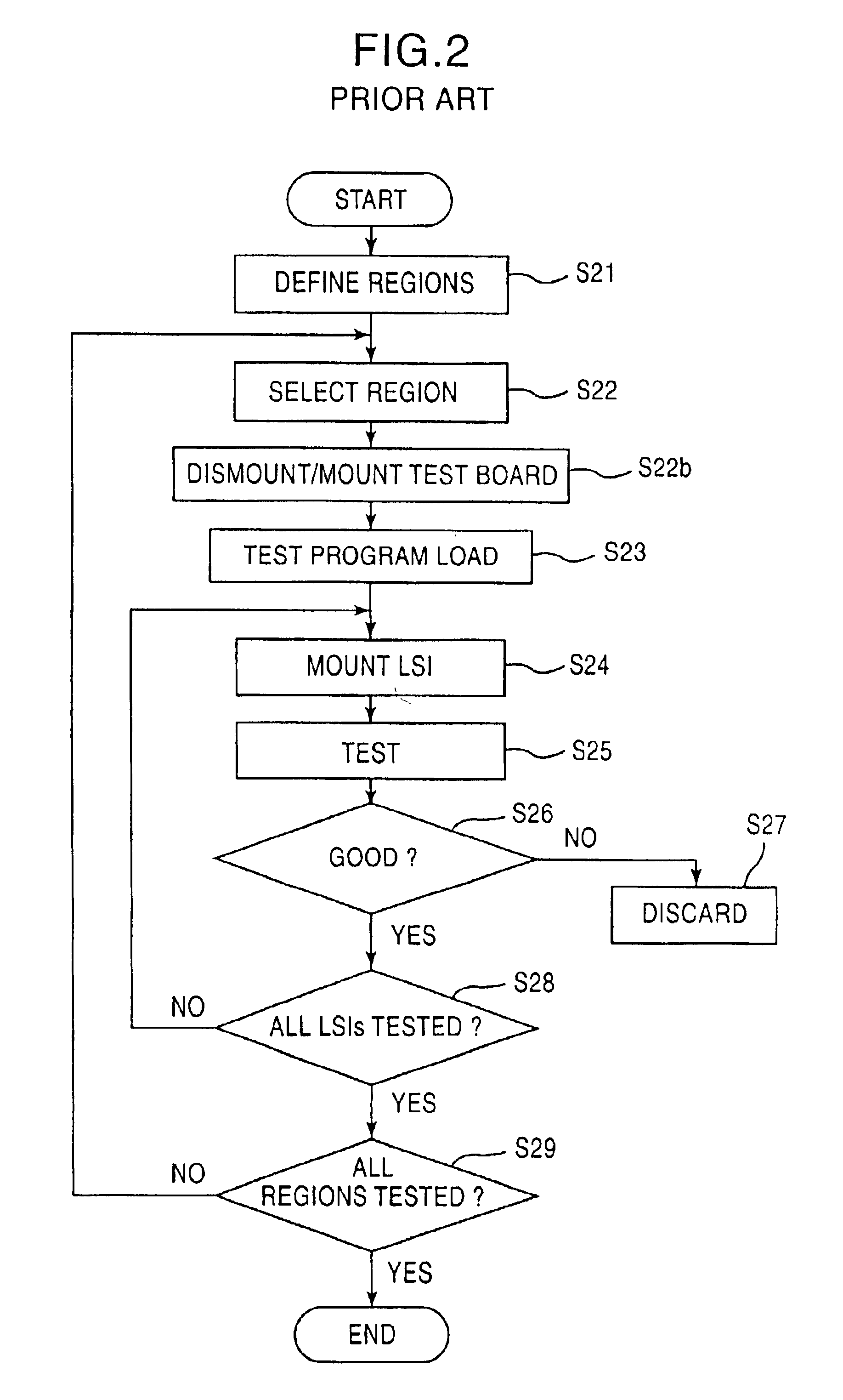Semiconductor device having a matrix array of contacts and a fabrication process thereof
a technology of semiconductor devices and contacts, applied in the direction of individual semiconductor device testing, semiconductor/solid-state device testing/measurement, instruments, etc., can solve the problems of increasing the cost of lsi chip testing, the foregoing testing process, and the inability to test all solder balls, so as to reduce the number of testing boards needed for testing, reduce the cost of the semiconductor device, and reduce the time needed for writing test programs for each of the testing boards
- Summary
- Abstract
- Description
- Claims
- Application Information
AI Technical Summary
Benefits of technology
Problems solved by technology
Method used
Image
Examples
first embodiment
[First Embodiment]
FIG. 4 shows the construction of an LSI chip 1 according to a first embodiment of the present invention in a bottom view.
Referring to FIG. 4, the LSI chip 1 carries, on a bottom surface thereof, various contact electrodes including TAP (test access port) terminals 10a and 10b, power supply terminals (VDD) 11, ground terminals (GND) 12, signal input terminals 13 and signal output terminals 14, wherein it should be noted that the bottom surface of the LSI chip 1 is divided into a first region R1 and a second region R2 by a boundary line L. Thereby, the foregoing terminals are also divided into two groups such that the terminals in the first region R1 are symmetrical with the corresponding terminals in the second region R2 about a form center 15 of the LSI chip 1. In other words, there is a diad axis in correspondence to the form center 15.
For example, the TAP terminal 10a in the region R1 is formed such that the terminal 10a coincides with the corresponding TAP termi...
second embodiment
[Second Embodiment]
FIG. 9 shows the bottom view of the LSI chip 1 according to a second embodiment of the present invention, wherein those parts corresponding to the parts described previously are designated by the same reference numerals and the description thereof will be omitted.
Referring to FIG. 9, the LSI chip 1 of the present invention has a bottom surface divided into regions RA-RD by the boundary lines L1 and L2, wherein the region RA includes a test control terminal 9a, a power (VDD) terminal 11a, a power (GND) terminal 12a, a signal input terminal 13a and a signal output terminal 14a.
Similarly to the first embodiment, the foregoing terminals are arranged symmetric with respect to the form center 15 such that the each terminal comes to the overlapping location of a terminal of the same kind after rotation about the foregoing form center 15 by an angle of 90°. In other words, there appears a 90-degree axial symmetry in the bottom surface of the LSI chip 1.
FIG. 10 shows the ...
third embodiment
[Third Embodiment]
In the foregoing first and second embodiments, there arises problems noted below.
The first problem arises in relation to the mode of mounting of the LSI chip 1 on the testing board 2, in that the LSI chip 1 is mounted on the testing board 2 in the progressively rotated state. In view of the fact that the same testing program is used throughout in the foregoing embodiments, there arises a difficulty in relating the result of the testing and the region of the LSI chip 1 that has been tested. Further, there arises a difficulty to recognize whether or not the entire regions of the LSI chip 1 have been tested.
The second problem is that, due to the requirement of axial symmetry in the arrangement of the terminals, the degree of freedom in designing the LSI chip is reduced substantially.
FIG. 11 shows the bottom view of the LSI chip 1 according to a third embodiment of the present invention in which the foregoing first problem is addressed, wherein those parts of FIG. 11 c...
PUM
 Login to View More
Login to View More Abstract
Description
Claims
Application Information
 Login to View More
Login to View More - R&D
- Intellectual Property
- Life Sciences
- Materials
- Tech Scout
- Unparalleled Data Quality
- Higher Quality Content
- 60% Fewer Hallucinations
Browse by: Latest US Patents, China's latest patents, Technical Efficacy Thesaurus, Application Domain, Technology Topic, Popular Technical Reports.
© 2025 PatSnap. All rights reserved.Legal|Privacy policy|Modern Slavery Act Transparency Statement|Sitemap|About US| Contact US: help@patsnap.com



